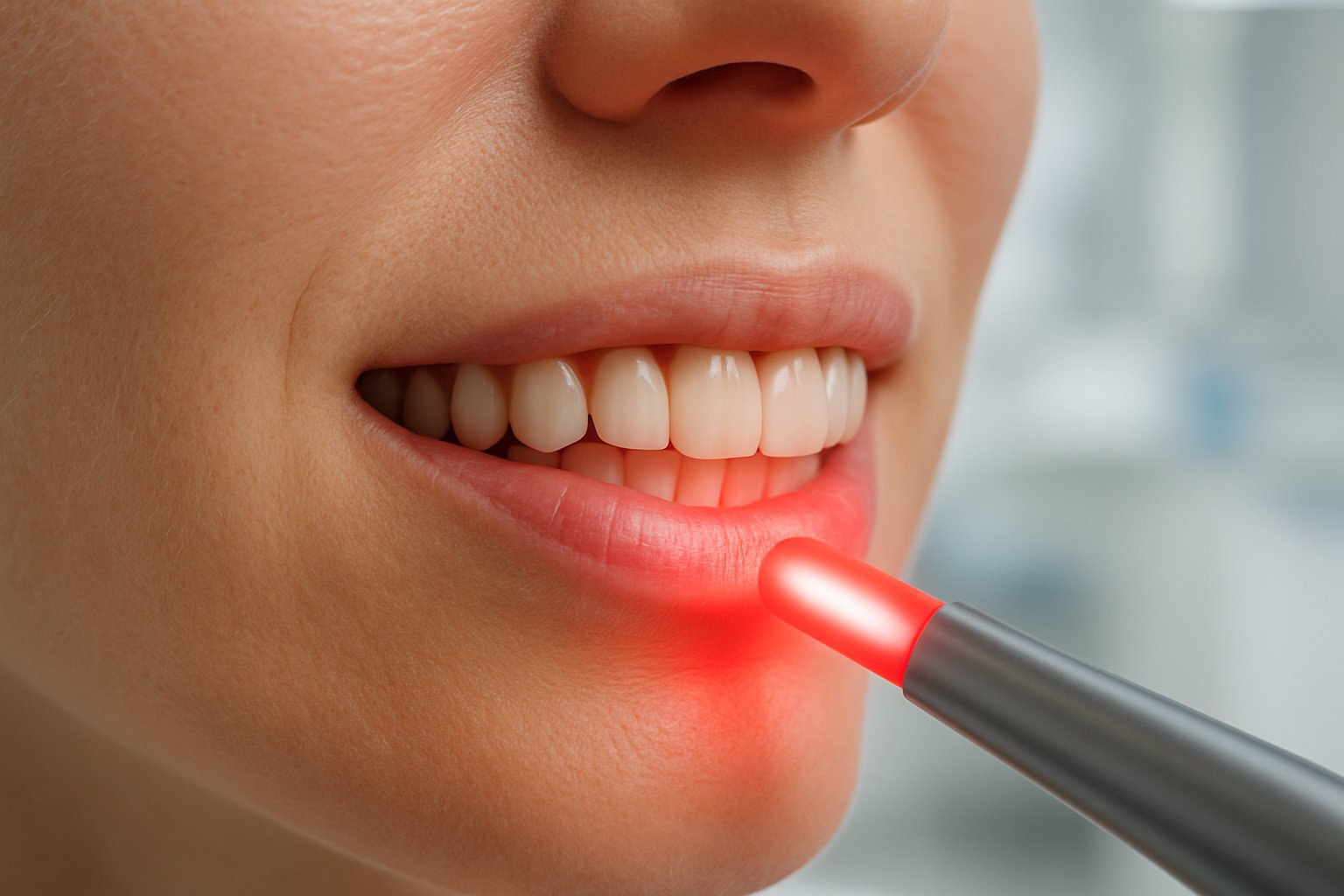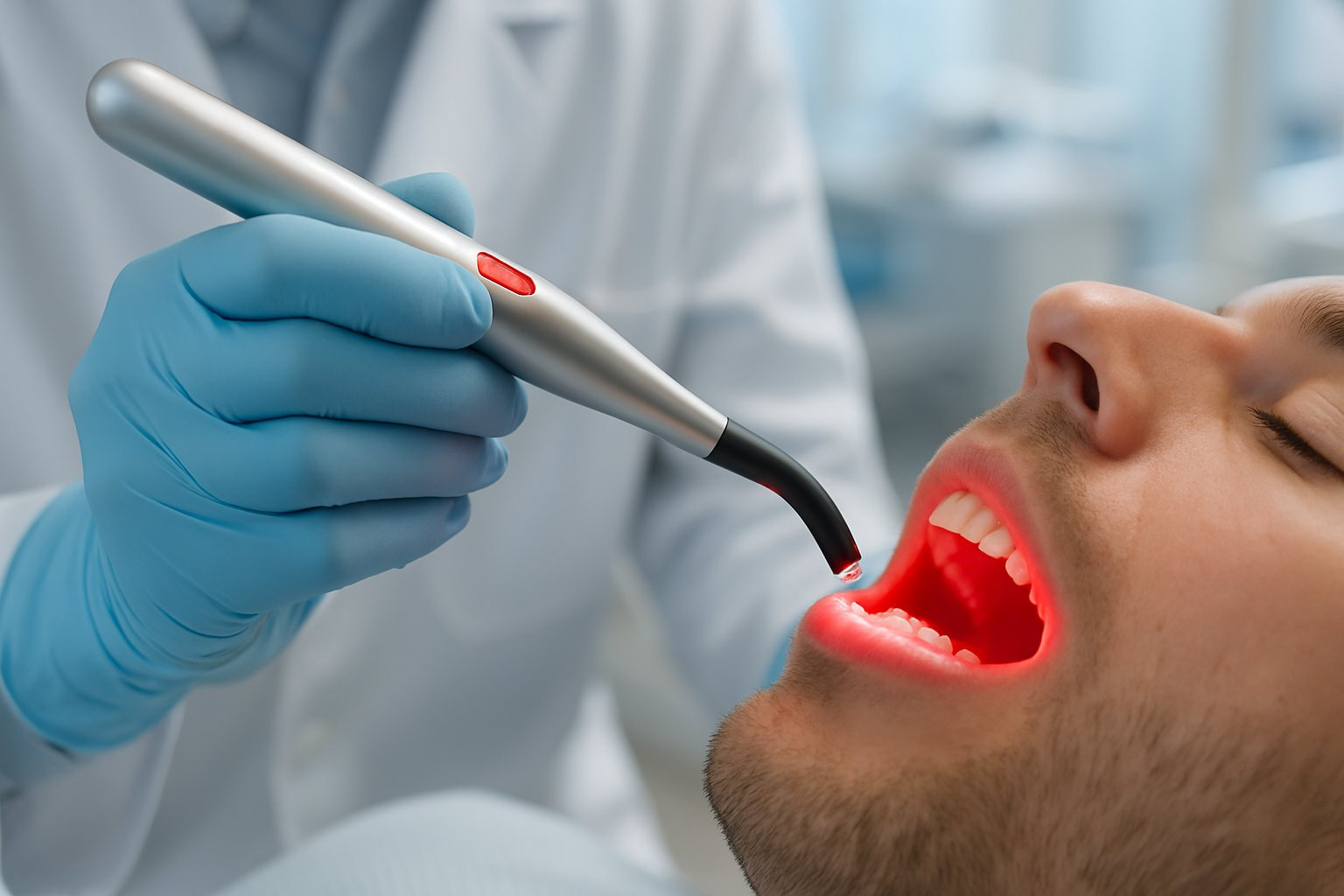
20 Years of Producing the Highest Quality, Most Reliable, and Effective LED mask.
Red light therapy, also known as Low-Level Light Therapy (LLLT) or photobiomodulation, has emerged as a revolutionary non-invasive treatment for periodontal health. This comprehensive guide provides dental professionals with evidence-based protocols, device recommendations, and practical implementation strategies for incorporating red light therapy into gum disease treatment plans.
Red light therapy utilizes specific wavelengths of light, typically between 630-850nm, to stimulate cellular processes that promote healing and reduce inflammation. When applied to gum tissue, these wavelengths penetrate to optimal depths, triggering beneficial biological responses at the cellular level.
Traditional periodontal treatments, while effective, can be invasive and uncomfortable for patients. Red light therapy offers:
Red light wavelengths (particularly 660nm and 830nm) are absorbed by cytochrome c oxidase in mitochondria, leading to:
Research demonstrates that red light therapy:
The therapy promotes:
Red Light (630-670nm):
Near-Infrared Light (810-850nm):
Before beginning treatment:
For Gingivitis:
For Periodontitis:
Post-Surgical Protocol:
Integrate red light therapy with:
For patients with treated periodontal disease:
Essential wavelengths:
Best for: Clinical practice, precise treatmentsFeatures:
Price Range: $3,000 - $15,000Examples: Professional periodontal light therapy systems
Best for: Flexibility, multiple treatment roomsFeatures:
Price Range: $1,500 - $5,000
Best for: Maintenance therapy, patient complianceFeatures:
Price Range: $200 - $800
When selecting a device, evaluate:
Red light therapy for gums has an excellent safety record with minimal contraindications and side effects.
Absolute contraindications:
Relative contraindications:
Minimal side effects may include:
No reported side effects:
Patient: 45-year-old female, moderate gingivitisTreatment: 6 sessions over 2 weeks, 660nm + 850nmResults:
Patient: 52-year-old male, localized moderate periodontitisTreatment: 12 sessions over 4 weeks combined with SRPResults:
Patient: 38-year-old female, post-flap surgeryTreatment: Daily treatments for 2 weeks post-surgeryResults:
Recent systematic reviews and clinical trials demonstrate:
Combined data from multiple studies:
Workflow optimization:
Staff preparation:
Education strategies:
Marketing considerations:
Initial costs:
Revenue potential:
Most practices see ROI within:

Q: How long does each treatment take?A: Individual treatments typically take 5-15 minutes, depending on the area being treated and the specific protocol.
Q: Can red light therapy replace traditional periodontal treatment?A: Red light therapy is an excellent adjunct to traditional treatments but is not typically used as a standalone replacement for scaling, root planing, or surgery in advanced cases.
Q: How soon can patients expect to see results?A: Many patients notice reduced bleeding and sensitivity within 3-5 treatments. Significant clinical improvements are typically seen after completing the full treatment protocol.
Q: Is special training required?A: Yes, proper training is essential for optimal results and safety. Most device manufacturers provide comprehensive training programs.
Q: What is the maintenance protocol?A: Maintenance typically involves monthly or quarterly treatments, depending on the patient's periodontal status and risk factors.

Q: Is red light therapy painful?A: No, the treatment is painless. Most patients report a gentle warming sensation or no sensation at all.
Q: Are there any side effects?A: Side effects are extremely rare. Some patients may experience temporary warmth during treatment.
Q: How many treatments will I need?A: This varies based on your condition. Typically, 6-12 treatments are recommended for the initial series, with periodic maintenance.
Q: Is the treatment covered by insurance?A: Coverage varies by insurance provider. Check with your insurance company, as some plans may cover red light therapy for periodontal treatment.
Contact manufacturers for:
Red light therapy represents a significant advancement in periodontal care, offering patients a comfortable, effective, and non-invasive treatment option. For practitioners, it provides an opportunity to enhance treatment outcomes, improve patient satisfaction, and differentiate their practice.
Success with red light therapy depends on:
As research continues to expand our understanding of photobiomodulation, red light therapy will likely become an increasingly important tool in the periodontal treatment armamentarium.
This guide serves as an educational resource for dental professionals. Always consult current research and follow manufacturer guidelines for specific devices and protocols. Individual patient results may vary, and professional judgment should always guide treatment decisions.
Contact Information:
Quick Links:
